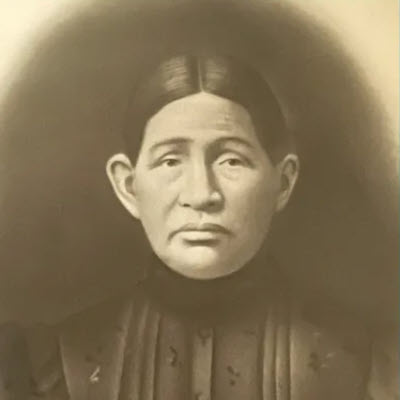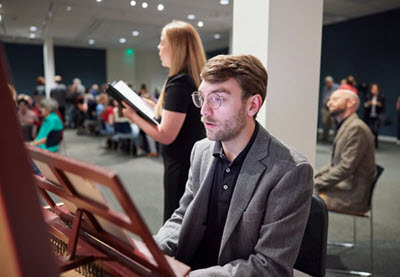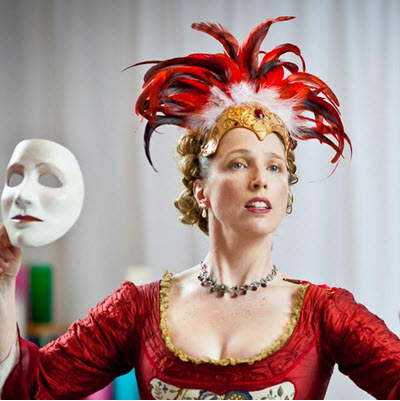by Charles Metz
Published May 6, 2024
An interior designer curated a home that showcases historical instruments and is ‘conducive to study and casual performances’
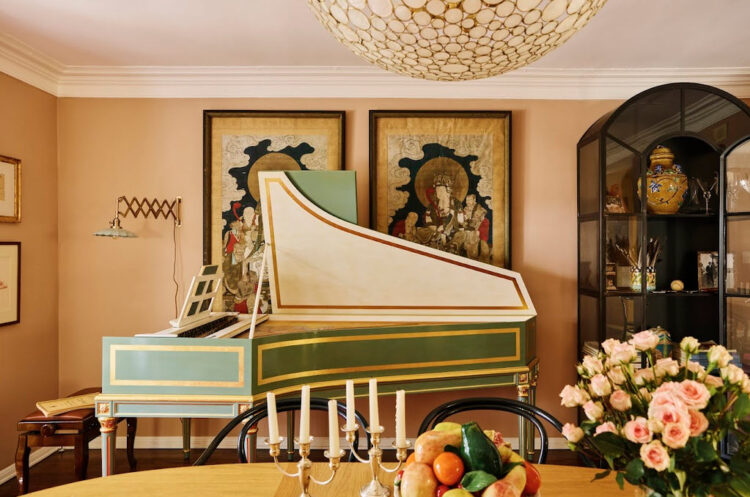
It was an ordinary high school field trip to the Smithsonian Museum in Washington D.C. — an exciting event for any teenager who happened to grow up on a poultry farm in rural Pennsylvania. For me, the experience was transformative.
I still recall the sounds, space, and light of one particular gallery the moment I stepped in. Time stood still: I had never encountered an 18th-century French harpsichord. A tour guide was talking about the instrument and played a few pieces. I was transfixed by this new creature. The cabinetry — ornate, gilded, and painted — was dazzling, a feast of artistry and craftsmanship that made the modern piano seem utterly prosaic and boring. But it was the sound that transported me, to a place I knew I wanted to inhabit, with a sharpness and specificity that took my breath away. The ancient sounds echoed deep within me.
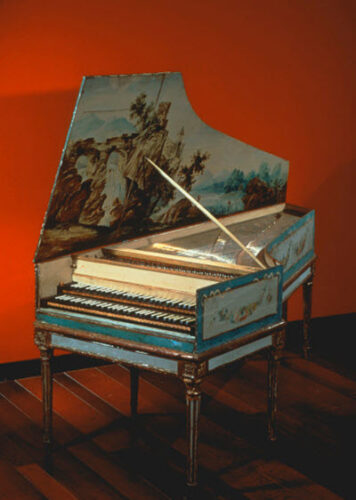
Many years later, as a performer, I stood in that same Smithsonian gallery with my own copy of the very same instrument, the original and the reproduction side by side. My life-long journey began with that double manual Benoit Stehlin harpsichord.
I had a strong desire to lift the hood of this new beast, to understand its guts and inner workings. To better comprehend the evolution of keyboard instruments that ended with the modern piano, I started to build them. Over the years, I’ve built eight kit instruments: clavichords, virginals, Flemish and French harpsichords, and even a Viennese fortepiano.
After undergraduate studies as a piano major at Penn State, I spent a year studying harpsichord with Igor Kipnis and earned a doctorate in historical performance practice from Washington University in St. Louis, working with Trevor Pinnock and Nic McGegan.
Aware that I’d need to earn a living beyond music, I took a different professional path and worked as an optometrist for 25 years, continuing to perform occasionally. But the passion remained strong, so I took early retirement and devoted myself anew to music, working as a harpsichordist with early-music ensembles such as Chicago’s Newberry Consort and groups in St. Louis, Kansas City, and Southern California.
Years later, my partner — attorney and Manhattan School of Music-trained pianist Howard Schreiber — and I bought a lovely 1939 Georgian Revival house, with period details, near L.A.’s Hancock Park neighborhood. Luke Havekes, an interior designer from Montreal, created a space that showcases the instruments in an environment conducive to study and casual at-home salons and performances. He chose vibrant colors, eclectic furnishings, and antiques based on his vision of a layered setting for the instruments while keeping the house comfortable and livable. The following home interior photographs are by Marc Olivier Becotte.
Take the tour
In our rose-hued dining room sits one of my most beloved instruments (top photo): a copy of the double manual Benoit Stehlin instrument I first heard at the Smithsonian as a school boy.
While living in St. Louis, I met David Bayer, an exceptionally talented builder. His 17th-century style Italian instrument, built in 1977, was being sold by its first owner. I bought it.
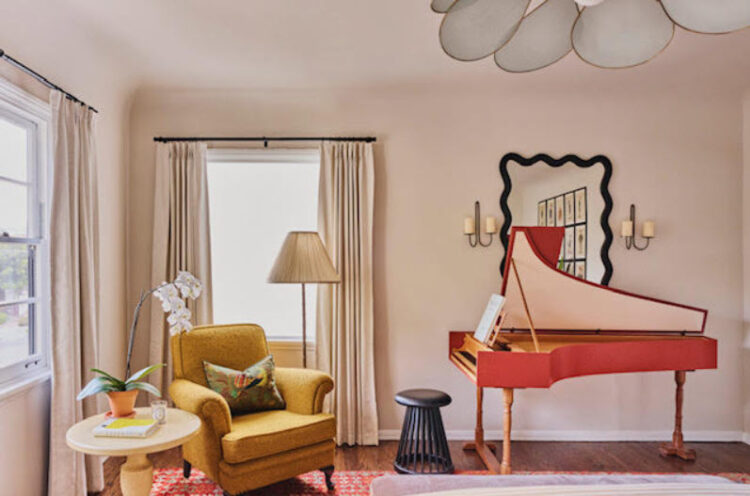
It was no longer playing, since too much oil had been applied to the crow-feather plectra, which seeped into the tongue and caused the pivot pin to corrode and become rigid. After disassembling all the jacks, I used steel wool to clean the pivot pins. It now plays effortlessly. Italian instruments have been essential for my continuo playing over the years. The refurbished Bayer now has a very full and robust sound with its all-brass wire and resides in an appropriately quirky upstairs guest bedroom — allowing me to practice when other instruments might be played downstairs.
A friend tipped me off to an old instrument in a small antiques store outside of St. Louis. It was being sold as a piece of “painted furniture.”
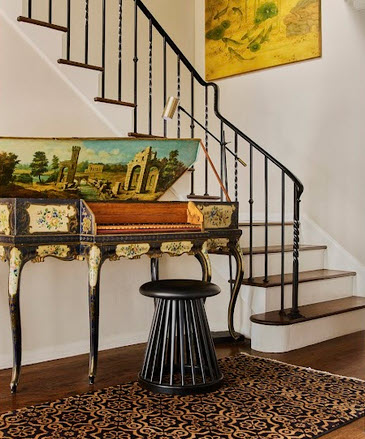
It was actually an unplayable Italian Virginal, with over 40 cracks in the soundboard, keys missing, and with same-gauge wire throughout, and zither-like pins inserted in the old tuning pin holes. Fortunately, the original iron hammered tuning pins were still with the instrument. I bought it, not knowing how it would sound or if it could be restored. Careful examination in measurements of the body of the instrument, and identifying the shape of the key well scrolls, indicate it was made c. 1590 by Francesco Poggi of Florence, Italy.
The stand and painting on the case and lid are from the 19th-century, based on chemical analysis of the pigments. X-ray images suggest there is no painting under the current lid painting. There are 18 known instruments by this maker, all in museums — except for three in private hands, this being one of them. I recorded a CD of Elizabethan music on it, in 2017, after a three-year restoration. Part of the work involved shimming and flattening the warped original soundboard, which is one piece of cypress, not planked together like most soundboards today. Walter and Berta Burr in Hoosick, N.Y., accomplished this amazing feat of bringing life back to this 400-year-old instrument, which is now living its next chapter in our stair hallway.
In recent years I have explored the fortepiano world. When I met Paul McNulty at a Westfield conference, after talking about my background in building kit instruments, he agreed to build me a six-octave Viennese instrument based on a c. 1805 model by Anton Walter.
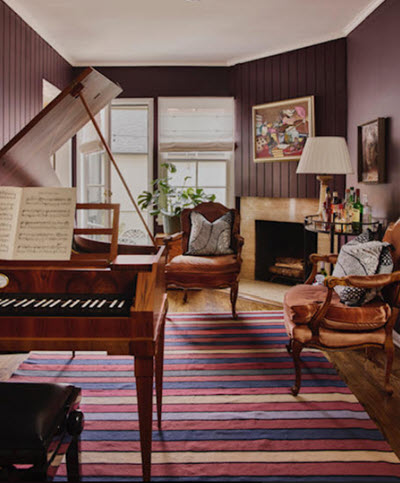
As a harpsichordist, hearing and being able to have dynamics at my disposal was exciting and thrilling. In many ways, I felt like an 18th-century musician being introduced to this new technology and exploring all the sound options it provided with an una corde and moderator. I’ve lent out the instrument to many fellow musicians for practice and performances around Southern California.
It has now found a home in a most intimate room with rich burgundy walls, a travertine fireplace, and cozy French bergère chairs for listening.
Another friend who explores antique stores sent me a picture of a keyboard instrument languishing in a consignment shop in Santa Barbara, unplayable, which I recognized as a square piano from the early 19th century. Although I initially said it was only a “practice” instrument and not that worthwhile, I began to read everything I could find on “Muzio Clementi & Comp.” — the maker’s logo in the keywell.
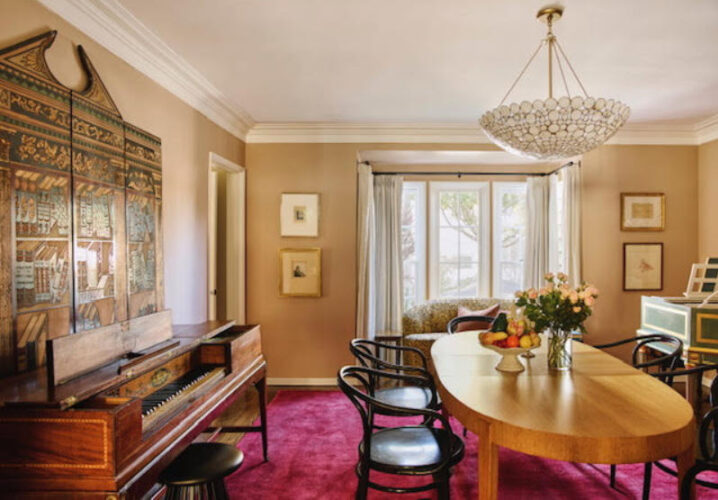
A stamped serial number on the left side of the instrument puts it into the year of 1806. These instruments, wildly popular, were extremely important in the development of the piano, in terms of its action and sound. It was also important for players, mostly young women, and for composers who advanced music composition and music techniques in the 19th century. I engaged Dale Munschy of South Weymouth, Mass. to do the restoration.
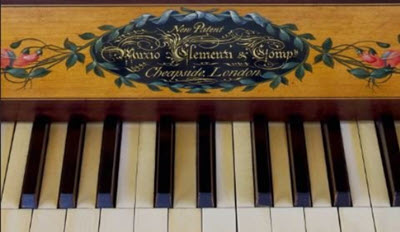
Muzio Clementi was an astute businessman, publisher, composer, and performer who compiled a dozen Domenico Scarlatti sonatas and published them in 1791, with dynamic markings specifically for this early piano. It was the first time this was done for Scarlatti sonatas. Last year, I recorded and released a CD of Clementi’s Scarlatti edition on this 1806 square piano.
The instrument now sits in the dining room opposite the French harpsichord. Our dining room, with vintage Thonet chairs and a capiz shell chandelier from Oly Studio, is the perfect stage for dinners and music.
My latest acquisition is another McNulty-built fortepiano, a copy of a Robert Schumann-era 1836 Graf.
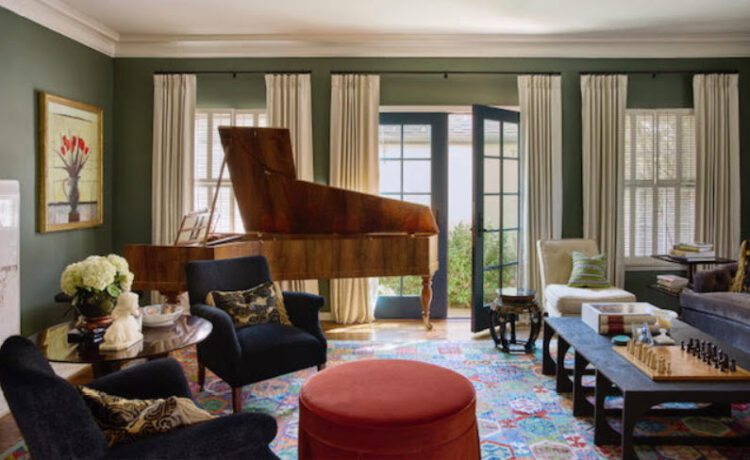
Viennese action and leather hammers help produce a loud and rich sound. With a six-octave keyboard, it can play repertoire from most of the first half of the 19th century. It was finished last year in the Czech Republic and used in the 2023 Chopin Period Piano Competition in Warsaw, Poland. For me, the generously scaled sunken living room, with rich green hued walls of Farrow and Ball paint, creates the perfect context for the instrument.
As with all my instruments, I’m delighted to share their stories and their sound via recordings. And I often share the instruments themselves: the Los Angeles Chamber Orchestra, for example, will use the Graf-style McNulty fortepiano at a benefit concert in the fall. It’s one of many fulfilling aspects of my lifetime passion for the keyboard. For more on all of my instruments, visit www.charlesjmetz.com.
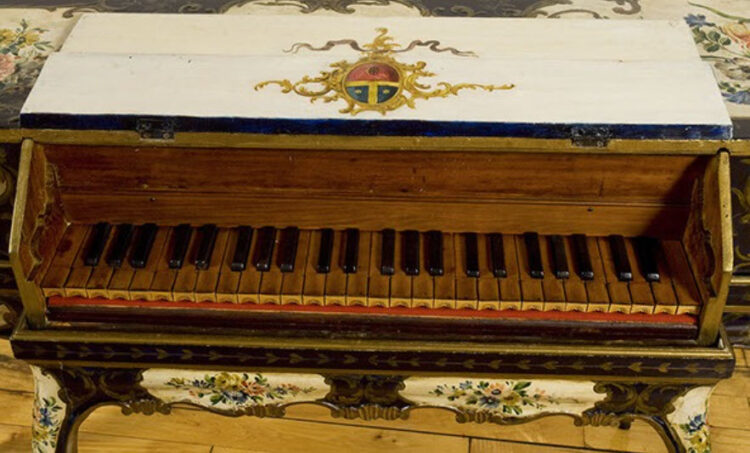
Charles Metz, an early-keyboard specialist, performs on instruments from his own collection. He earned a Ph.D. in historical performance practice and a doctorate in optometry and worked 20 years in private practice in St. Louis. A former Early Music America board member, he now lives in Southern California.

